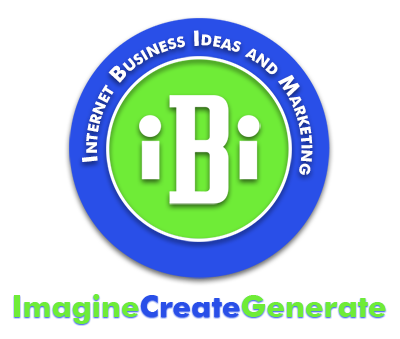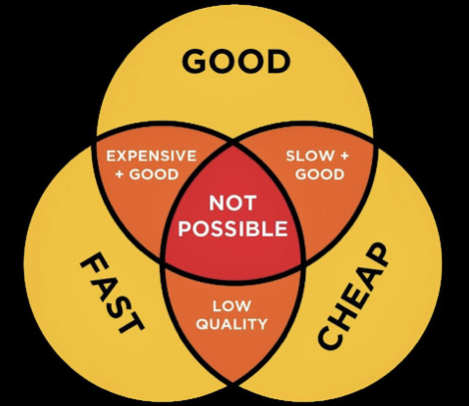Everybody wants things "fast, cheap, and good". Unfortunately, all 3 can rarely be accomplished simultaneously. As a matter of fact, we call getting all three the unicorn of the sweet spot. With that being said, we have a product to get all three and that is our free initial review/consultation. Contact us today for that unicorn experience.
When you do any project, there are three main factors that impact the outcome - speed, cost, and quality. However, you can only achieve two of these three factors simultaneously. In other words, you cannot have all three at once. You can apply this hypothesis to various industry verticals and personal situations.
Let me explain further why you can’t have all three at once.
Fast: Refers to how fast a product or service can be delivered. It's the amount of time it takes to go from conception to completion. In some cases, speed may be the most critical factor, such as in emergency situations or when working on time-sensitive projects.
Cheap: Cost refers to the amount of money that is required to complete a project or produce a product. Cost is often a primary consideration, especially for businesses operating on a tight budget.
Good: Quality refers to the overall excellence of a product or service. Quality can be measured in terms of performance, reliability, user experience, and other factors. Quality is often essential for businesses that want to build a loyal customer base and maintain a positive reputation.
All three of these factors are important for delivering a good product, hence you can see why they compete. For example, if a project is completed quickly and cheaply, it's likely that the quality of the work will suffer. Conversely, if quality is prioritized over speed and cost, the project will take longer to complete, and it may be more expensive.
Here are a few examples:
Suppose a restaurant owner is considering launching a new menu item - a burger that is healthier than traditional burgers. They want the burger to be ready within a month, cost no more than $5 per unit, and be delicious. Using the "fast, cheap, and good" theory, the owner will have to decide which two factors they will prioritize.
If the owner decides to prioritize speed and cost, they may source cheaper ingredients that are not as flavorful, and the burger may not be as healthy as originally intended. However, they'll be able to launch the burger quickly and at a lower cost. If they decide to prioritize cost and quality, they may source higher-quality ingredients, but the burger may take longer to develop, and it may cost more than $5 per unit. If they decide to prioritize speed and quality, they may rush the development process, resulting in a lower quality burger that may be more expensive than originally planned.
In all three scenarios, the owner must compromise on one factor to achieve the other two. The key is to be aware of these trade-offs and make strategic decisions that align with the business's overall goals.
The "fast, cheap, and good" theory can also be applied to larger-scale projects, such as construction or software development. For example, if a construction company is building a new office building, they may have to prioritize speed and cost over quality to meet a tight deadline and budget. However, if they're building a high-end luxury hotel, they may need to prioritize quality and cost over speed to ensure that the finished product meets the client's high standards.
Similarly, in software development, if a company is working on a new product, they may have to prioritize speed and quality over cost to beat their competitors to market with a high-quality product. However, if they're working on a product for a client on a tight budget, they may have to prioritize cost and speed over quality.
In conclusion, the Fast, Cheap, and Good are the three factors that every project manager must consider when planning and executing a project. The quality of the project depends on these three factors. If you want the project to be done quickly and inexpensively, you must compromise on quality. If you want the project to be done quickly and of high quality, you must pay more for it. Finally, if you want the project to be done inexpensively and of high quality, you must be willing to wait for it.

